Long before the Tornado: the ancestors of modern MLRS and their evolution
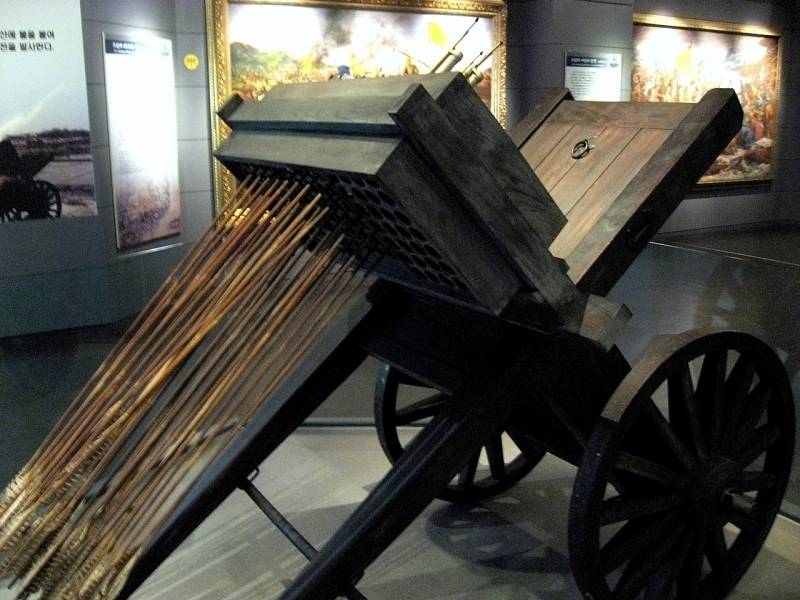
Modern reconstruction of the Korean MLRS "Hwachha", side-rear view. Photo: Wikimedia Commons
The appearance of the modern multiple launch rocket system was formed in the first half of the XNUMXth century, and in the future the same weapon has become widespread. However, the concept of such a weapon was known earlier. Attempts to create various types of MLRS have been made for several centuries, and have often been successful.
First known
It is believed that the first multiple launch rocket system was the Korean product "Hwacha" ("Fire Cart"). The earliest mentions of this weapon date back to the XNUMXth century. – The Korean army first used it during the Imdin War against Japan. Subsequently, Fire Wagons regularly appeared on the battlefield and provided fire support to infantry and cavalry.
“Khvachkha” had a fairly simple design. It was built on a wooden two-wheeled carriage designed to be towed by a horse. The launcher was mounted on the carriage in the form of a package of short metal tubes. The ammunition used was an arrow of a traditional design, on the head of which a small powder engine with a wick was attached.
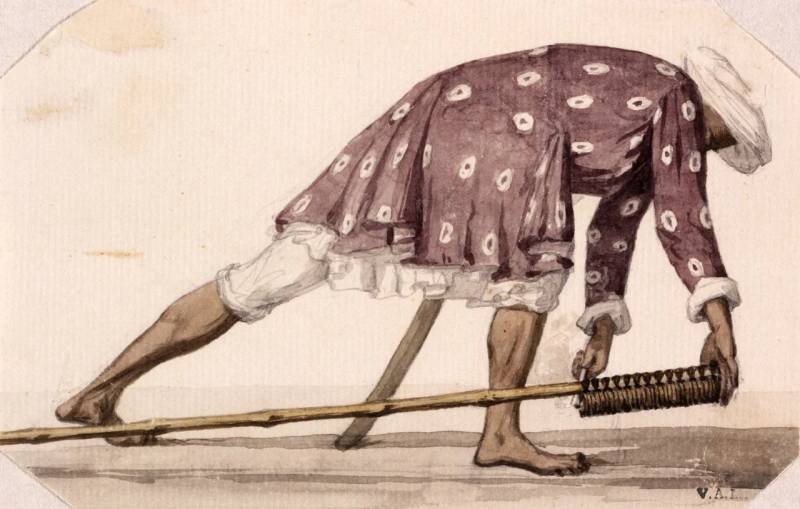
Mysore soldier with a rocket. Graphics by Thebetterindia.com
The calculation of such an installation was supposed to point it at a concentration of enemy troops and set fire to the wicks, simultaneously or sequentially. “Khvachkha” could simultaneously launch up to several dozen arrows - such an MLRS actually replaced a large unit of archers. At the same time, the jet engine made it possible to obtain a significant increase in firing range. The defeat of manpower occurred due to kinetic energy and a sharp arrow tip. The arrow could also carry a light powder charge or a flammable element.
Fire wagons have been used for several centuries and have been used in various conflicts. Such weapons remained relevant due to the lack of serious development of protective equipment, other artillery systems, etc.
Indian experience
From the end of the XNUMXth century. in the south of the Hindustan Peninsula there was the principality of Mysore. His army had all the necessary weapons characteristic of that time. In addition, missiles of its own design were in service. Mysore rockets had a small body filled with gunpowder, with a long stabilizer pole. Initially, the cases were made of cardboard, but in the XNUMXth century. managed to master precision iron casting. The metal body improved the characteristics of the powder engine and the flight characteristics of the missiles.
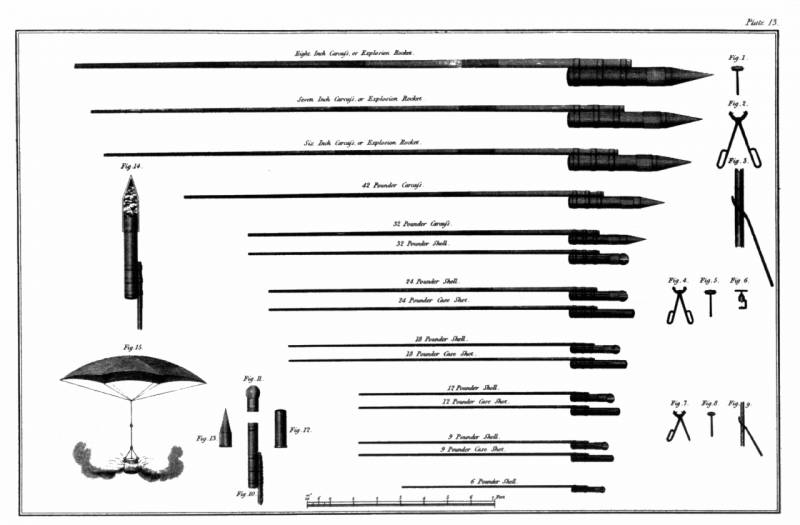
W. Congreve missiles of various types and auxiliary equipment. Wikimedia Commons Graphics
Mysore missiles were infantry weapons. Specially trained rocket shooters launched their weapons without the use of special means, literally by hand. However, over time, launchers also appeared, incl. providing salvo fire. An MLRS of this kind was a trolley with guide grooves for missiles in the amount of 5-7 to 10-12 pieces. Guidance and ignition were carried out manually.
Rockets held a special place in the Mysore army. At the peak of its development, the units had up to 4-5 thousand rocket scientists, working independently or as part of crews. The missiles were used in all conflicts involving the Mysore army. Episodes of their use against the British army became especially famous. The rockets caused serious damage to advancing enemy troops, and also hit large stationary objects such as warehouses or camps.
On other people's ideas
During the Mysore wars, the British army gained negative experience. However, they managed to turn it to their advantage. In 1805, British General William Congreve, who was responsible for the production of gunpowder for the army, demonstrated a rocket of his design, based on Mysore ammunition. He significantly redesigned the original design and improved the main technical and economic parameters. Subsequently, the development of missiles was continued by W. Congreve Jr., and it was he who managed to make them a full-fledged weapon of the army.
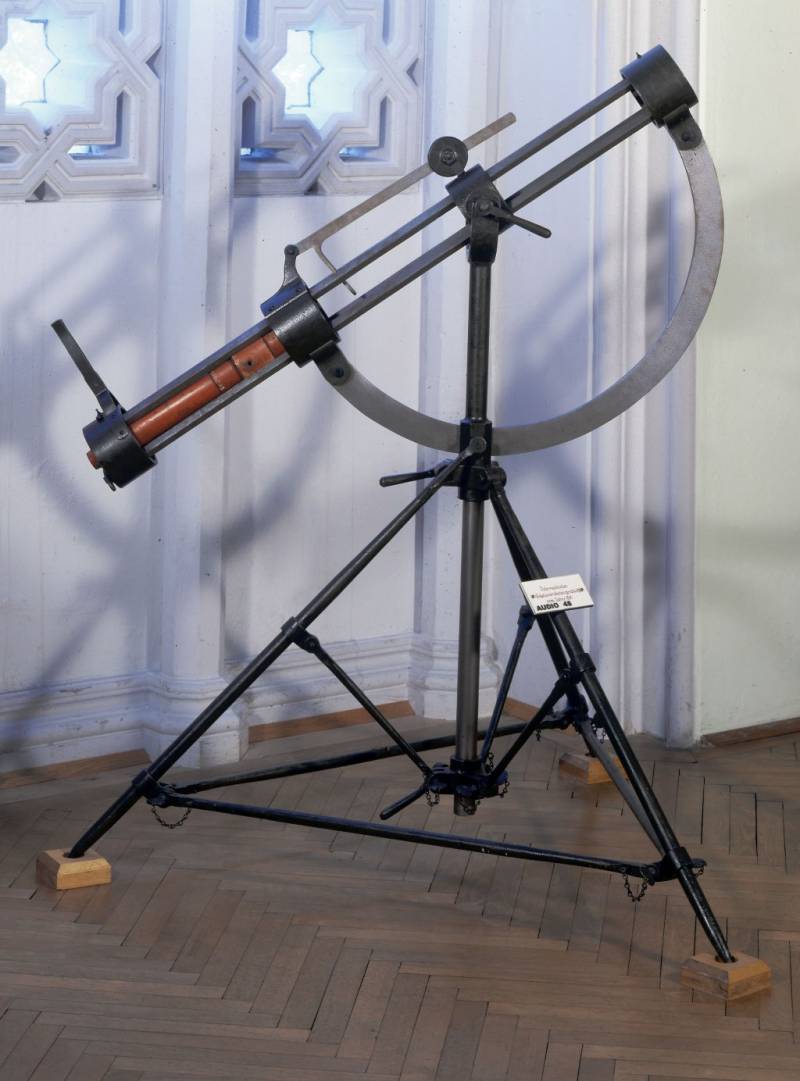
W. Hale rocket on a single launcher. Photo: Wikimedia Commons
The Congreve rocket had a body made of sheet iron filled with a powder charge. Also in the case was placed a bursting or incendiary charge. Like the Mysore missiles, a wooden pole attached to the side of the hull was used as a stabilizer and to interact with the launcher. Later it was transferred to the longitudinal axis. The army was offered a whole line of missiles in calibers from 3 to 32 pounds (1,4-14,5 kg) with a flight range of up to 2,5-3 km.
Congreve's missiles came with a simple launcher: a tubular guide was placed on the machine, into which a pole was inserted. It is curious that the British army used only installations for one missile. If it was necessary to fire in one volley, several such devices were used.
British missiles did not go unnoticed abroad, and other developed countries tried to copy and improve these weapons. In particular, France in 1830 came up with the idea of an MLRS for such ammunition. A launcher with four guides for Congreve missiles entered service. In addition, the world's first transport and launch container for missiles was created. It was a wooden box that held six shells, which could be fired directly from it or placed on conventional launchers.
New generation
A characteristic feature of Congreve's rockets, which had its pros and cons, was the stabilizer pole. In 1844, British inventor William Hale proposed a rocket without this part. His rocket was stabilized by rotating around its longitudinal axis. To do this, there were deflectors next to the nozzles that deflected the powder gases. The Hale rocket was noticeably shorter than the Congreve system ammunition, and the creation of launchers was also simplified.
The British Army was not interested in the development of W. Hale, while the United States acquired a license to produce such missiles. As production and operation continued, attempts were made to independently improve the system. Thus, during the Civil War, towed and portable installations with four or more launch tubes for missiles appeared.
It should be noted that during the American Civil War, Hale rockets were used simultaneously with Congreve system shells. It became possible to compare two samples of different generations and draw the necessary conclusions. This circumstance to a certain extent determined the paths for the further development of missile weapons.
Delayed Breakout
During the XNUMXth century. rockets of various models have become quite widespread and entered service with all the most developed armies of the world. In this case, only single launchers were often used, and the salvo was ensured by the simultaneous use of several such products. Installations with multiple rails and corresponding combat capabilities did not enjoy the same popularity.
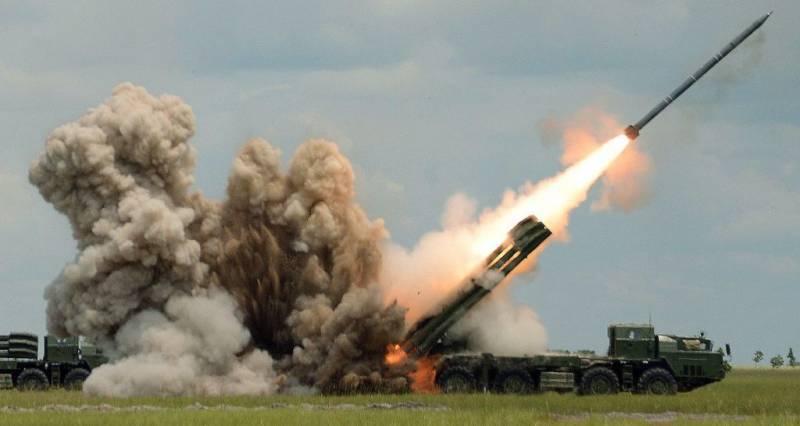
MLRS "Tornado-S". Photo by NPO "Splav"
The development of missile systems was limited by several factors. First of all, they did not receive enough attention due to the rapid development of barrel artillery. The appearance of rifled and cannon-loading guns, an increase in calibers, etc. led to a constant increase in the combat characteristics of artillery. Against this background, the rockets did not look their best.
The situation began to change only in the first decades of the XNUMXth century. Then new materials, technologies and solutions were created that made it possible to create a full-fledged MLRS of a modern look. Such systems are based on self-propelled platforms with sufficient characteristics, improved compositions of gunpowder and explosives, as well as manufacturing technologies for hulls and launchers that provide the necessary fire accuracy.
The first full-fledged MLRS of modern design appeared on the battlefield during the Second World War and quickly showed their potential. Subsequently, this direction continued to develop and yielded new results. Modern MLRS are capable of quickly entering a given area, attacking targets at distances of hundreds of kilometers and delivering a heavy combat load to them. An idea several centuries old has finally received full development and has given all the desired results.
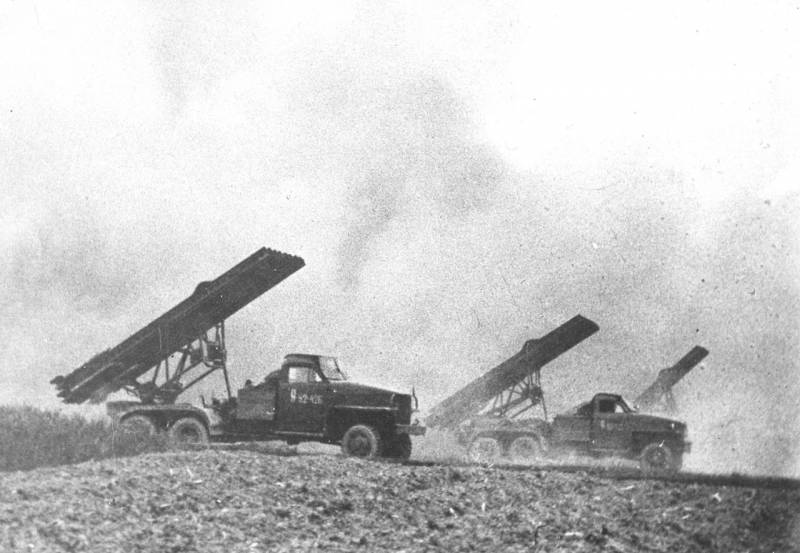
Information